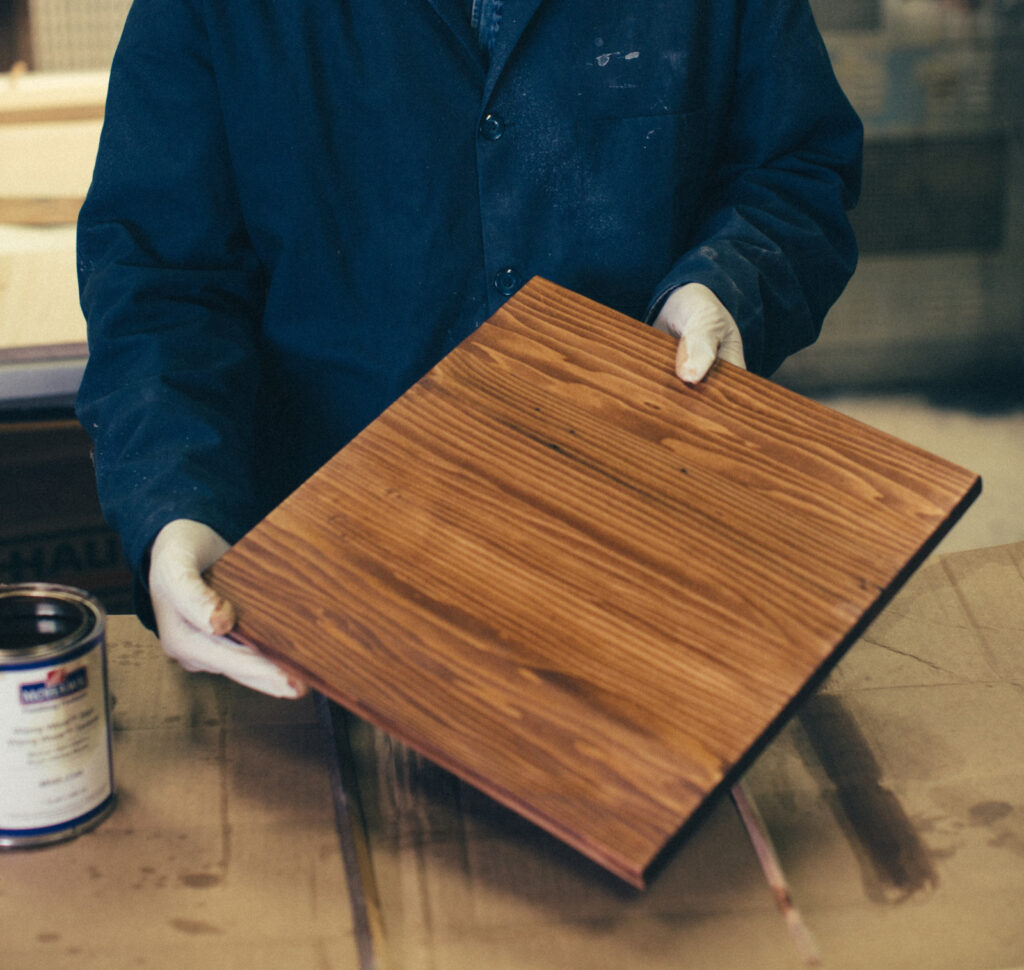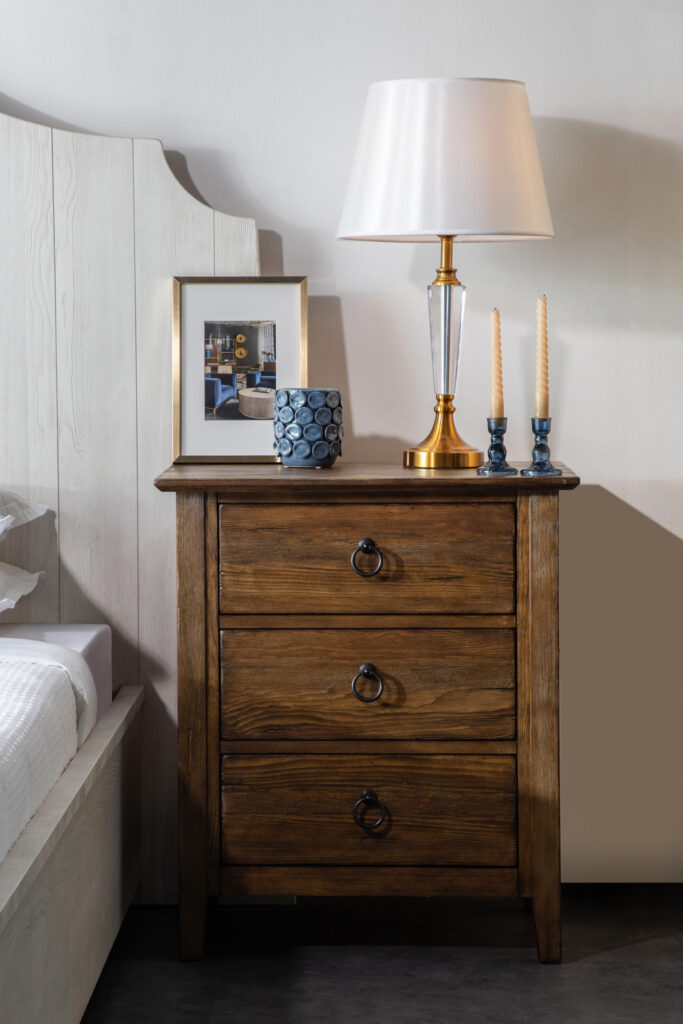Achieving Diverse Looks with Canadian Wood: Interview with Finishing Expert Bryan Hodges
We recently caught up with Bryan Hodges, Color and Design Manager with AkzoNobel to learn more about his recent experiences developing custom stains and finishes for Canadian Wood. Coming from a family deeply rooted in furniture manufacturing and design, Hodges honed his expertise through rigorous training in color design, R&D, and finishing systems. Now overseeing color styling and finishing systems across multiple segments, he shares his perspective on working with Western Hemlock and Douglas-fir, exploring how these versatile and sustainable Canadian species offer unique opportunities for achieving a balance of aesthetics and functionality.


What is the general process when collaborating with designers and manufacturers on projects like the Canadian Wood product trials?
It starts with furniture designers presenting renderings of their designs. I work with their team and the manufacturer’s product development team to develop a finish that complements the design. We utilize our color studio, which serves as a think tank for brainstorming and refining finishes. From there, we customize finishing systems tailored to the manufacturer’s capabilities, ensuring consistency and optimal results, whether they’re local or overseas.
What role does your team play in ensuring consistency in finishing systems?
We develop step panels to guide manufacturers through each stage of the finishing process. These panels serve as a recipe for achieving consistent results, even under varying environmental conditions. Our technicians work closely with manufacturers to troubleshoot and refine the process.
What makes Canadian wood species, particularly Western Hemlock and Douglas-fir, stand out in the furniture industry?
Western Hemlock and Douglas-fir offer a neutral palette, making them versatile for various finishes. Hemlock, in particular, impressed me with its density, workability, and ability to hold finishes. Unlike pine, which can bleed and yellow over time, Hemlock remains stable and offers a wide range of possibilities—from contemporary, sleek finishes to rustic, wire-brushed textures. Its lightweight nature also makes it suitable for more heavy-duty applications like garage doors without compromising durability.
How does the finishing process vary between light and dark finishes, particularly with Western Hemlock?
Western Hemlock’s density makes it easier to manage both light and dark finishes. Lighter finishes require careful sealing and top coating to maintain consistency, while darker finishes work well because of Western Hemlock’s even grain and non-porous surface. Compared to softer wood species, Western Hemlock is far easier to control, reducing issues like blotching or excessive absorption.


“Western Hemlock, in particular, impressed me with its density, workability, and ability to hold finishes. Unlike pine, which can bleed and yellow over time, Hemlock remains stable and offers a wide range of possibilities—from contemporary, sleek finishes to rustic, wire-brushed textures.“

What trends do you see in furniture finishes, and how does Western Hemlock fit into those trends?
Light naturals and whites are the most popular finishes right now across all segments. Western Hemlock’s versatility allows it to achieve these finishes beautifully, while also excelling in antique and rustic looks. The wood’s adaptability makes it suitable for both modern and traditional aesthetics, providing a broad appeal.
What challenges have you faced with other wood species, and how does Western Hemlock compare?
Each species has its own quirks. Pine is overly soft and prone to yellowing and bleeding, while hardwoods like oak can present challenges with grain consistency. Western Hemlock offers a middle ground—easy to work with, stable, and versatile. It allows for a range of finishes without the common pitfalls of other species.
Is there growing interest in exploring wood species from Canada—and what advice would you give to designers or manufacturers considering these species?
Yes, there is growing interest in wood species from Canada, especially on the higher end of the market. Designers are always looking for unique grains and textures, and there’s a growing openness to experimenting with new species. Western Hemlock and Douglas-fir fit this trend well, offering both aesthetic and functional benefits. I see significant opportunities for Western Hemlock and Douglas-fir, particularly in light natural finishes and sustainable design. Their neutral color and versatility make them ideal for long-lasting trends in the furniture industry. These species provide flexibility in design and finishing. Whether you want a sleek modern look or a heavily distressed antique aesthetic, they perform well. Western Hemlock’s doesn’t yellow which is a significant advantage, and its cost-effectiveness adds to its appeal.


“I see significant opportunities for Western Hemlock and Douglas-fir, particularly in light natural finishes and sustainable design. Their neutral color and versatility make them ideal for long-lasting trends in the furniture industry.”
About Canadian Wood
Canadian Wood is part of Forestry Innovation Investment (FII), a Crown agency of the British Columbia Government, headquartered in B.C. Canada, with satellite offices in Vietnam and India. Through market development programs, Canadian Wood promotes and supplies information about softwood products from British Columbia to wood industry professionals, and connects furniture manufacturers, designers, and wholesalers with leading softwood suppliers from B.C.
Try Canadian Wood
Looking for the right grade and wood species to achieve the desired design, color, and appearance for your next project? To better help you understand the color and overall appearance of Canadian softwoods, Canadian Wood offers small wood samples for you to work with. Visit canadianwoodbc.com.